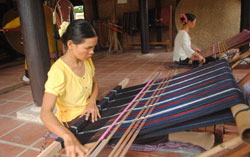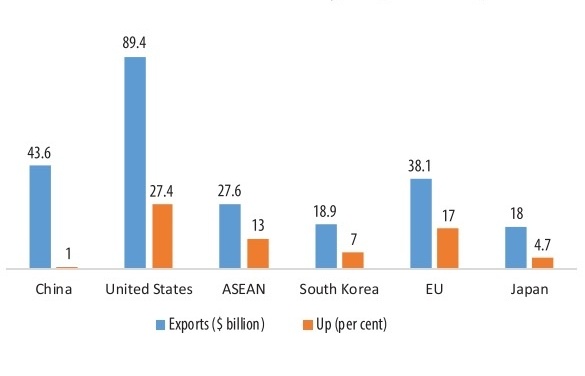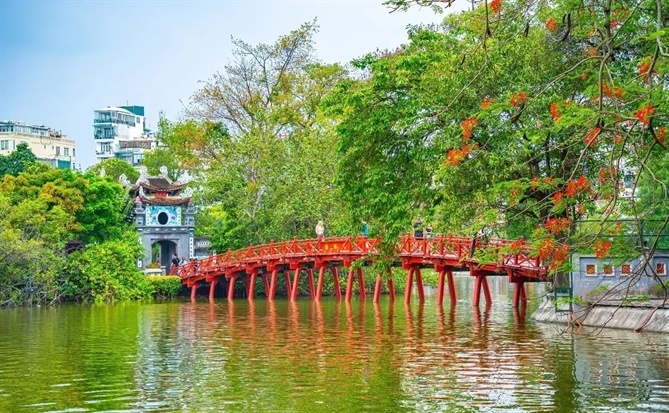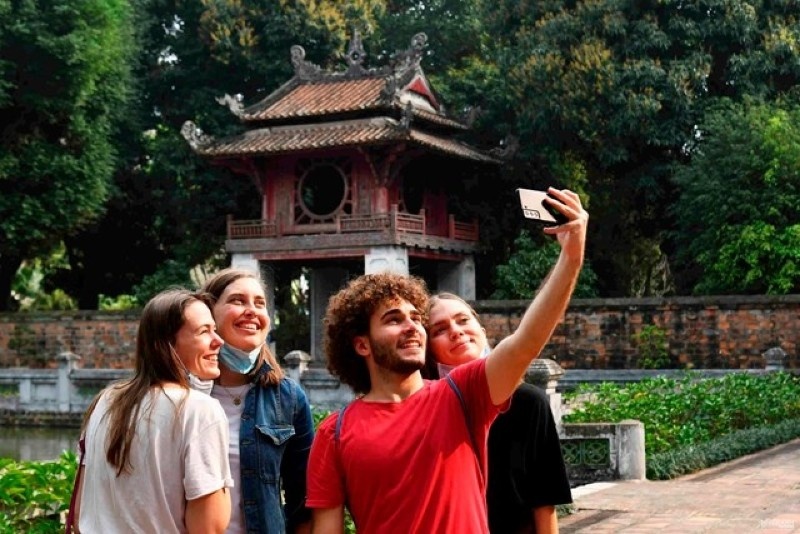Craft village spins tales of centuries-old silk trade
 |
||
|
Captivating: An old house in the Silk Village in Hoi An. The village has become a new draw for tourists.
|
The silk trade, which began in the central city during the 17th century when Hoi An was a busy trading port, is now a drawcard for local and foreign tourists.
The village, which is 30km south of Da Nang City and covers 2ha, is a place where visitors can get an insight into silk production by exploring the mulberry gardens and breeding houses where silk worms are cultivated. Visitors will also see workers reeling silk yarn and weaving silk products.
"I've been working in the trade since I was a child and the job is my family's main source of income," says Te. "Now I have chance to promote the trade by introducing its tricks to the public."
The 28-year-old is in charge of feeding silkworms with mulberry leaves in the silk village.
"Tourists are often scared of silkworms at the first sight, but they soon find the worms so interesting, especially when feeding the insect with mulberry leaves on a flat basket," he said.
Each silkworm will take about 21 days to spin a cocoon.
Pham Nguyen Khoi, a visitor, said he came to the village as he wanted to find out more about silk production.
"It's the first time I saw silkworms eating mulberry leaves. I can not image that silk is produced by a natural process," Khoi said.
At another part of the village, workers from Ma Chau Village – the only silk trade village in Hoi An – carry out other parts of the silk production process.
Nguyen Que and Le Thi Phuong have to boil the yellow cocoons and wind silk fibre onto rolls.
"It's not easy and takes time. We have to keep the water at 90oC and then dry the silk under the sun for days," Que said.
 |
| Squirmy: Nguyen Dang Quoc Te feeds silkworms with mulberry leaves. — VNS Photos Cong Thanh |
"We have been struggling with this work for years because it's hard to make a substantial profit. Now we are hoping to boost the trade by introducing the craft to tourists.
"Tourists are invited to practise the trade in the village. They are instructed by craftsmen and women in weaving silk."
Van Ba Dung, a silk worker from Duy Xuyen District, guides tourists on how to use a wooden loom that was used by weavers in the 17th century.
"Our village craftsmen specialise in making silk in the traditional way, even though these techniques were almost lost in the early 1990s. Now we have a chance to promote the trade as a tourism activity," Dung said.
Tourists are offered the chance to also harvest mulberry leaves in bamboo baskets before feeding the leaves to the silkworms, as well as joining crafts people in reeling silk and weaving silk items.
Dan Thi Tinh, 63, a Cham ethnic woman from Phan Rang city, was invited to work at the village.
"The trade has a long history as silk production in Hoi An was brought by the ethnic Cham people so I also want to show tourists the history of the trade in Hoi An," Tinh said.
"It's also an insight into traditional techniques as hand-made silk production can only be seen in the village now."
Nguyen Thi Hong Thuy, a visitor from Ha Nam province, said she found her visit useful and informative.
"I now have a complete understanding of the silk trade in Hoi An City. I saw farmers get mulberry leaves from the garden and feed the silkworms and can see it's a long and difficult process to make silk," Thuy said.
"I'm not very skilful, and I'm clumsy with the loom which has pedals to make the wheel spin. I did a good job with reeling the silk because it's easier."
The silk village is also a type of museum which features a collection of nha ruong (houses built with wooden beams and pillars) and old tools used in the craft.
Manager of the Silk Village Le The Vu, says the village is a very new destination for tourists in Hoi An.
"It will be a centre introducing the old craft to tourists," Vu said.
"We also have a cuisine centre and home-stay service for tourists when they want to make a longer visit, not only to the village, but around Hoi An Town."
The village is just a 15-minute walk from Hoi An's old quarter and close to a bus station that links Hoi An and Danang city.
What the stars mean:
★ Poor ★ ★ Promising ★★★ Good ★★★★ Very good ★★★★★ Exceptional
Related Contents
Latest News
More News
- Con Dao leads the way in circular tourism (October 08, 2024 | 08:00)
- Nestlé and VNAT announce new cooperation initiative (October 02, 2024 | 15:43)
- Hanoi recognises new city-level tourist areas (September 27, 2024 | 20:25)
- Hue to host 2025 National Tourism Year (September 19, 2024 | 15:13)
- Hoa Binh Group consolidates leading position in Vietnam’s MICE industry (September 11, 2024 | 14:26)
- Ba Ria-Vung Tau targets high-quality business tourism (September 10, 2024 | 09:00)
- Hanoi awarded Asia's Leading City Destination (September 04, 2024 | 16:54)
- National Day boosts Hanoi tourism revenue (September 04, 2024 | 16:11)
- Indian tourists can be gold mine for Vietnam (September 04, 2024 | 12:10)
- New Dalat travel map unveiled for tourists (August 31, 2024 | 21:53)




 Tag:
Tag:






















 Mobile Version
Mobile Version